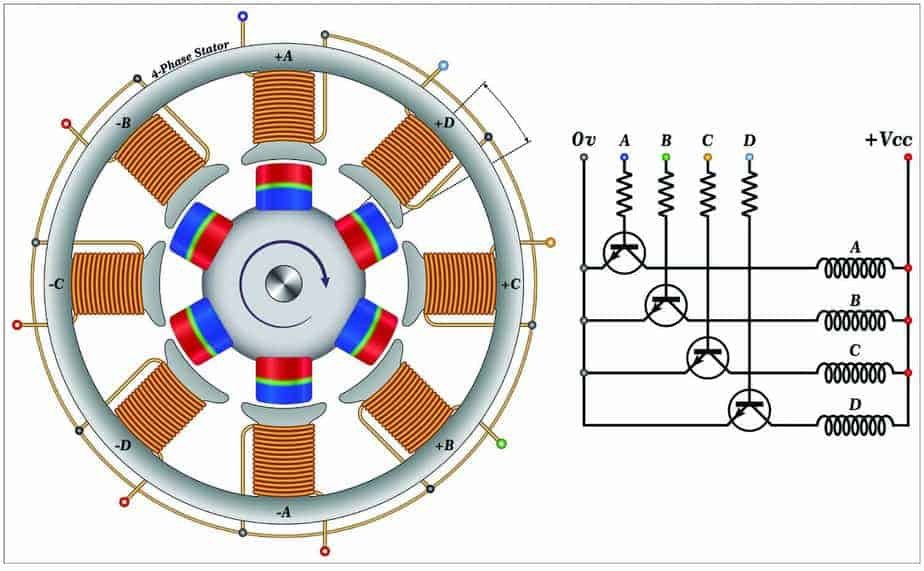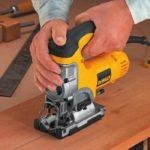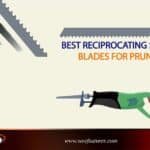You may use a number of cordless tools, Whether or not you are a professional carpenter. If you have no idea what is a Brushless DC Motor? Don’t worry; in this article, we will provide Hughes information about the BLDC motor. Brushless DC Motors or BLDC Motors has a significant contribution to modern drive technology.
They were made possible with the coming of solid-state gadgets. The regulation of current, known as commutation, can be dealt with by programming in a brushless motor.
Advantages of brushless DC motors include a higher capacity to weight proportion, the potential for higher speeds, and electronic control. These motors provide specific advantages over other types of electrical motors.
Their quick addition in popularity has seen an expanding scope of uses in the fields of Consumer Appliances, Chemical and Medical, Automotive Industry, and Industrial Automation.
What is a Brushless DC (BLDC) Motor?
A Brushless DC Motor is like a Brushed DC Motor but as the name recommends, a BLDC doesn't utilize brushes for commutation yet rather they are electronically commutated. In ordinary Brushed DC Motors, the brushes are utilized to transmit the rotor's power as they turn in a fixed magnetic field.
A brushless motor is a direct current (DC) electric motor that works without the mechanical brushes and commutator of a traditional brush motor. It has particular favorable circumstances over a brush motor and is more efficient over the long run, despite the higher initial costs. Brushless engines are utilized in different parts of trenchless construction.
History of Brushless DC Motor
Brushless DC motors initially made the scene in 1962, when T.G. Wilson and P.H. Trickey divulged what they called "a DC motor with solid-state commutation.
Remember that brushless DC motors' key component rather than brush DC motors is that the brushless DC motor requires no physical commutator, a progressive contrast.
As the gadget was refined and created, it turned into a well-known decision for uncommon applications, such as PC disk drives, mechanical technology, and airplane. Indeed, brushless DC engines are utilized in these gadgets today, after fifty years, so incredible is their adequacy.
The motors differ according to power type AC/DC and their method of generating rotation (see Figure 1). Below, we describe the features and uses of each type of motor.

Different Types of Electric Motors
Types of Brushless DC motor
Technology products are continually being updated. Brushless technology has delivered the DC motors into various types. Inner rotor design and Outer rotor Design, there are 2 Primary types of brushless motor.
The next paragraph contains a brief description of different brushless DC motor.
- Inner rotor design (in runner)
- Outer Rotor Design (out runner)
- Slotless motors
- Brushless DC motors IP65
Inner rotor design (in runner): this is an ordinary design, where the rotor is situated at the center (focus), and stator winding encompasses it. The inner rotor Brushless DC motors from Power are specially intended to meet quick speeding up and high accuracy and low commotion, which applications call for.
Outer Rotor Design (out runner): In this setup, the rotor is outside. For example, stator windings are situated at the center while the rotor, carrying permanent magnets, encompasses the stator. The outer rotor Brushless DC motors from Power Motor could convey stable high force, reduced size, and long service life for various applications.
Slotless motors: In slotless motors, the stator comprises ring-molded plates with a flat winding. The inductance of these motors is extremely low, but the current in the windings rises quickly. They offer high force thickness joined with a smaller size.
Brushless DC motors IP65: Here, all motor arrangements are furnished with a steady magnetic encoder, which is insensitive toward rough modern conditions and requires no extra Hall sensors.
Coordinating regulators/drives and planetary gearboxes are accessible here. It also includes:
- 160 W – 400 W rated power
- With connectors or cable
- Rated speed: 3,000 U/min – 6,000 U/min
- Encoder goal: 1,024 CPR – 2,500 CPR
- Coordinating regulators/drives and planetary gearboxes accessible
Construction of a Brushless DC Motor
Brushless DC motor consists of two fundamental parts: a stator and a rotor. Permanent magnets are mounted on the rotor of a brushless DC motor, and the stator is twisted for a particular number of poles. Likewise, a control circuit is associated with the stator winding.
The inverter/control circuit or regulator is incorporated into the stator gathering. This is the basic constructional difference between a brushless motor and a typical brushed DC motor.
According to the principle of Electronics Commutation, there are three types of brushless motors. Read this article Principle of Brushless DC motor for more information.
How Brushless DC Motors Turn
With brushed DC motors, the brushes convey current through the commutator into the coils on the rotor. In case of a brushless DC motor, the rotor is a permanent magnet; the coils don't turn, yet are rather fixed set up on the stator. Since the coils don't move, there is no requirement for brushes and a commutator.

In the brushed DC motor, rotation is achieved by controlling the magnetic fields created by the coils on the rotor, while the magnetic field produced by the fixed magnets stays fixed. To change the rotation speed, you have to change the voltage for the coils.
With a brushless DC motor, it is the lasting magnet that rotates; turn is accomplished by altering the course of the magnetic fields produced by the surrounding fixed coils.
How a Brushless DC Motor Works
In a brushed DC motor, the rotor turns 180-degrees when an electric current is run to the armature. To turn any further, the shafts of the electromagnet must have to be flipped.
As the rotor turns, the brushes connect with the stator, flipping the magnetic field and permitting the rotor to turn an entire 360-degrees.
A brushless DC motor is basically flipped back to front, taking out the requirement for brushes to convert the electromagnetic field.
In a brushless DC motor, the permanent magnets are on the rotor, and the electromagnets are on the stator. A PC at that point charges the electromagnets in the stator to turn the rotor an entire 360-degrees.
Advantages of brushless motors
The BLDC motor is commutated by power switches instead of brushes. Compared with a brushed DC motor or an induction motor, the BLDC motor has many advantages.
- High performance and reliability
- Low accent sound
- Lighter and smaller
- Better dynamic response
- Better velocity vs. torque features
- High-speed range
- Durable Long life
- Less maintenance
More proficient/ High performance and reliability
The constant contact of the brushes with the power terminals of a brushed DC motor is necessary for it to maintain its rotation. However, this friction creates a large portion of the energy created by the rotational movement is wasted as heat.
But the brushless DC motors create very little heat. There is still some vitality energy loss due to air friction as the rotor quickly turns, yet this is minimal. Brushless engines are equipped for up to 90% productivity.
Less commotion/ Low accent sound
Brushless DC motors are a lot calmer. Despite the fact that the rotor's rapid rotation still creates a characteristic “whirring” sound, it is as yet a huge improvement to the shrieking sound we have heard in case of brushed DC motors. Brushless DC motors rotate more smoothly than the brushed DC motor.
Lighter and smaller
Brushed technology motor requires more copper wire coils, so they are heavy in weight and large in size. A brushless DC motor uses very few parts; as a result, it is light in weight and small in size. This advantage makes more compact designs of power tools.
Better dynamic response
Better velocity vs. torque features
High-speed range
Longer life expectancy
The brushes' continuous contact and the energy generated as heat implies that brushed DC motors are required to separate a lot of sooner than brushless DC motors.
Less maintenance
In the brushed DC, motors commutator rotates rapidly. When brushes get exhausted and can no longer maintain contact, a brushed DC motor basically becomes useless.
This is less of a problem with brushless DC motors. Truth be told, there is basically no contact between the rotor and stator of a brushless DC motor, so wear and tear are incredibly reduced.
Uses of Brushless DC Motor/ Applications
Although comparatively more expensive for brushless motors, nevertheless, brushless motors have dominated many applications, such as computer hard drives and CD / DVD players.
Small cooling fans in various electronic equipment are powered exclusively by brushless motors. It uses these in cordless power tools where the increased efficiency of the motor provides longer use before it charges the battery.
A low speed, low power brushless motor is used in direct-drive turntables for gramophone records.
Cordless tools
Cordless tools with brushless motors went ahead of the scene a few years back and immediately made progress on traditional brushed models. Because of the brushless DC motor discovery, there is a revolution in the era of cordless power tools. Moreover, cordless power tools are becoming popular day by day because of the increase of brushless DC motors' run time.
The technology always seemed a little out of reach for the average toolbox. At present, reasonable brushless power tools getting through the ranks.
All the manufacturer tries to use this type of motor for their product. Dewald is the most successful manufacturer who produces a lot of power tools by using a brushless motor. Contractors or professionals also trust cordless products such as cordless drill machines, cordless jig saws, Cordless Chainsaw, reciprocating saw, Circular Saw, Compact Circular Saw, Pole saw, etc. with more flexibility or independently.
Automation systems
They are likewise ideal for drones. Their capacity to convey accuracy control makes them particularly appropriate for multi rotor drones. It is toward this path that more emphasis has been laid on developing controllers for brushless DC motors drives.
Motion control systems
Brushless DC motors have replaced other motors in applications going from forced air conditioners to remote-controlled giving advantages regarding effectiveness, reliability, and performance. Brushless DC motors offer brilliant proficiency, controllability, and life span.
These motors usually have an efficiency of 85-90%, while brushed motors are usually only 75-80% efficient and are utilized for a wide variety of application, for example, constant loads and situating applications in the fields of industrial control, car, flying, automation systems, medical services supplies and so forth.
Brushless DC motors are continually being used in new sectors. However, in general, we can identify the following sectors.
- Transport
- Cordless tools
- Heating and ventilation
- Industrial engineering
- Motion control systems
- Positioning and actuation systems
- Aeromodelling
- Radio-controlled cars
We have discussed it very briefly here. You can read these Applications of Brushless DC motor for details. Now we brief some particular utilizations of the brushless DC motor for you.
- PC hard drives and DVD/CD players
- Electric vehicles, crossbreed vehicles, and electric bikes
- Washing machines, blowers, and dryers
- Fans, pumps, and blowers
- Industrial robots, CNC machine instruments, and basic belt driven frameworks
Conclusion
They are likewise ideal for drones. Their capacity to convey accuracy control makes them particularly appropriate for multirotor drones. It is toward this path that more emphasis has been laid on developing controllers for brushless DC motors drives.
We can hope to see brushless DC motors utilized in a more extensive scope of utilizations later on. For instance, they will likely be broadly used to drive service robots. One may imagine that stepper engines would be more appropriate in this sort of use.
But, BLDC motors are more qualified in this manner. Brushless DC motor may also be replacing simple brushed DC motors in mobility carts and golf carts. In addition to their better efficiency, brushless DC motors can also deliver more exact control, which can thusly broaden battery life.









